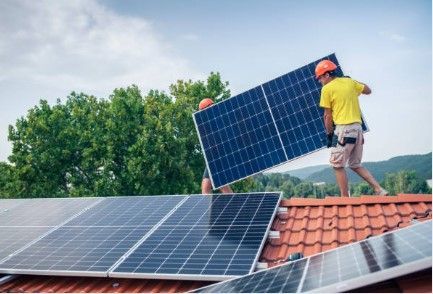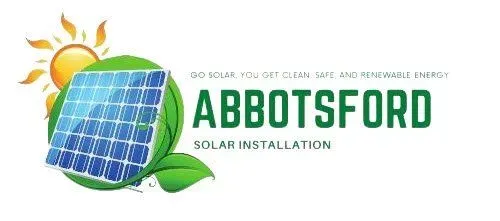Abbotsford Solar Installation
Achieve Peak Performance: Top Additions for Your Home Solar Setup
Going solar is a feasible option for homeowners looking to save money on energy costs. The first commercially available solar cells in the 1960s only achieved around 4% efficiency in converting sunlight to electricity. But installing solar panels with modern equipment and approaches boasts energy efficiency exceeding 20%.
While a basic
solar panel installation at home can reduce your reliance on traditional electricity, there's always room for optimization. Adding essential equipment to your existing solar energy system will unlock its full potential and achieve peak performance.
About Solar Panels
Solar panels work by catching the sunlight and converting it into direct current (DC), which is electricity generated through the photovoltaic effect. This phenomenon occurs when sunlight strikes the silicon layers within the panel, causing electrons to flow and generate electricity.
The efficiency of a solar panel dictates the amount of sun's energy it can convert into usable electricity. According to NREL (National Renewable Energy Laboratory), efficiency records jumped from around 25% in 2000 to nearly 35% by the mid-2010s. However, real-world factors like temperature and sunlight angle can also impact solar panel installation performance.
Upgrade Your Solar Energy System With These Must-Haves
Solar Installation with Solar Trackers
While fixed-tilt solar panels offer a significant advantage over traditional energy sources, they have an inherent limitation: they capture sunlight optimally only for a portion of the day. This is where solar trackers come in. These innovative devices are motorized mounts that adjust the position of your panels, ensuring they face the sun directly.
Types of Solar Trackers and Their Variations
| Types | How it Works | Variations |
|---|---|---|
| Single-axis Trackers | These trackers rotate the solar panels along a single axis (normally east-west) throughout the day to follow the sun's horizontal movement. | (HSAT): The most common type of single-axis tracker, which rotates the panels east-west throughout the day. |
| Tilted Single-Axis Tracker (HTSAT): Similar to HSATs, but this is a system installed at a fixed tilt angle optimized for your specific latitude. | ||
| Dual-axis Trackers | These trackers can adjust the solar panels horizontally and vertically, which follow the sun's path throughout the day. It can maximize sunlight capture at any location and season. | Tip-tilt Dual-Axis Tracker (TTDAT): These trackers tilt the panels forward and backward on one axis and rotate them east-west on another. |
| Azimuth-Altitude Dual-Axis Tracker (AADAT): It uses one axis for azimuthal adjustment (east-west) and another for altitude adjustment (up-down), which allows for the most precise tracking of the sun's path |
Single-axis solar trackers can increase energy production by 20% to 35% more energy compared to fixed-tilt systems. But dual-axis trackers can achieve even more significant gains, reaching up to a 40-50% boost in energy output.
Benefits of Solar Trackers
- Increased Energy Production: Keeping your solar panels perpendicular to the sun throughout the day can capture more sunlight hours, which means more electricity generation.
- Improved Performance in All Seasons: Solar trackers compensate for seasonal variations to ensure optimal performance year-round.
- Reduced Temperature Impact: Solar trackers in solar power systems minimize the surface area exposed to direct midday sunlight by maintaining a steep angle, which mitigates efficiency losses due to heat buildup.
Power Inverters in Solar Panel Systems
Solar panels generate DC electricity, but most appliances in your home run on AC. This is where you need to use power inverters. It utilizes electronic circuitry to transform the DC output from your home solar panels into AC electricity. This involves switching the current flow's direction, mimicking AC's characteristic back-and-forth nature.
Beyond Basic Conversion
Modern solar power inverters go beyond simple DC-to-AC conversion. They're essential in ensuring the smooth and safe operation of solar energy systems. Here are some additional functionalities:
- Maximum Power Point Tracking (MPPT): Solar panel output can fluctuate based on sunlight intensity and temperature. MPPT technology ensures the inverter operates at the optimal point to provide your electricity needs.
- Grid Synchronization: If your solar power system is connected to the utility grid (with net metering), the solar power inverter synchronizes the frequency and voltage of the generated AC electricity with the grid for safe and seamless power integration.
- Safety Features: Inverters incorporate anti-islanding protection, which automatically disconnects the solar energy system from the grid in case of a power outage. This prevents potential harm to utility companies and solar providers.
Types of Solar Power Inverters
- String Inverters: The most common type, handling the combined DC output from multiple solar panels in a string.
- Microinverters: Attached to individual solar panels, offering greater efficiency and performance monitoring on a panel-by-panel basis.
- Battery Inverters: Essential for systems with battery storage, allowing for bi-directional power flow - charging batteries with excess solar energy and converting stored DC power back to AC for use when needed.
Solar Panel Cleaning Systems
Installing solar panels can accumulate dirt and grime, which reduces sunlight absorption and hinders electricity generation. Solar panel cleaning systems help maintain optimal efficiency by removing these pollutants.
Studies have shown that dust buildup after installing solar panels reduces the efficiency of a solar power system by as much as 5%. These losses can be even higher in areas prone to dust storms, bird droppings, or pollen buildup. Regular cleaning helps maintain optimal power generation, maximizing the return on your solar investment.
Types of Solar Panel Cleaning Systems
Manual Cleaning Systems
- Brush Attachment: High area coverage (800mm) speeds up cleaning. The device protects the delicate solar panel surface from scratches and allows for adjusting water pressure for optimal cleaning and rinsing.
- Telescopic Lance: Select a telescopic lance long enough to reach your entire solar panel system. For maximum flexibility, consider infinitely adjustable lances. These allow you to fine-tune the reach during cleanin. Opting for carbon or carbon composite materials reduces weight and minimize fatigue while cleaning.
Automated Cleaning Systems
- Roller Brushes: Automated cleaning systems with roller brushes are easier to use. High-pressure water does the work, requiring less force than scrubbing with handheld brushes. Soft bristles ensure the delicate solar panel surfaces are protected during cleaning.
Install Solar Panels with Surge Protection Devices
Power surges from lightning strikes or grid malfunctions can damage home electronics and solar system components. Voltage spikes can damage the delicate electronics in your inverter, monitoring systems, and other connected components. Surge protection devices (SPDs) act as safeguards, similar to lightning rods for buildings, but explicitly designed to protect solar systems.
Types of Surge Protection Devices
| Type 1 SPD | Installed for protection against powerful surges originating outside the system, like those from lightning strikes on the solar array |
| Type 2 SPD | Protects against indirect lightning strikes or surges traveling through the grid connection |
| Type 3 SPD | Provides targeted protection from smaller surges for specific equipment within the system, like the inverter or monitoring system. |
SPD Ratings
- Maximum Continuous Operating Voltage (MCOV): This rating specifies the maximum voltage the SPD can withstand for extended periods.
- Nominal Discharge Current (In): This rating indicates the amount of surge current the SPD can handle for a short duration. A higher In rating signifies the SPD's ability to manage more significant surges.

Power Up Your Abbotsford Home Now
Incorporate essential solar system upgrades like solar trackers, power inverters, cleaning systems, and surge protection devices to optimize your home solar setup. These residential solar system enhancements not only maximize solar energy generation but also ensure the longevity and efficiency of solar power systems. For a seamless transition to solar power, reach out to trusted solar companies like Abbotsford Solar Installation to elevate your home's energy efficiency while saving on energy bills.
Frequently Asked Questions
When is the ideal time to clean photovoltaic panels?
For agricultural settings, we suggest cleaning solar panels two to four times annually, particularly after periods of heavy pollution such as after flowering or harvesting. In less polluted environments, solar panels may only require cleaning once a year or every two to three years for more energy generation.
How much can I expect to reduce my electricity costs with a solar panel system?
A 6.6kW solar system can reduce electricity bills by over $2,000 annually. However, to maximize energy bill savings and reach $500-$600 reductions per quarter, you'll need to use a significant amount of power during the day, especially during summer. This translates to roughly 30 kWh of daytime usage on summer days.
How much will a solar panel system cost?
The upfront cost of starting or installing a solar panel system ranges from $15,000 to $22,500 before applying for tax credits (depending on system size between 6kW and 8kW). But due to government incentives, like the 30% federal tax credit, solar panels cost come down to $10,500-$15,750. Most homeowners can expect to recoup this cost upfront through electricity bill savings within 8.5 years, with total lifetime savings reaching $25,260.
